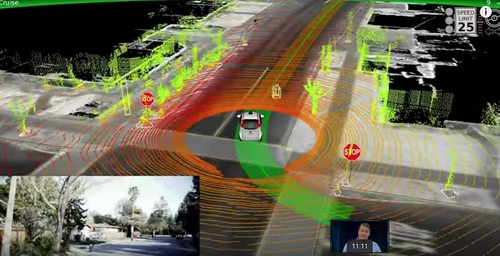Ask HighScalability: Choose an Async App Server or Multiple Blocking Servers?

Jonathan Willis, software developer by day and superhero by night, asked an interesting question via Twitter on StackOverflow:
tl;dr Many Rails apps or one Vertx/Play! app?
I've been having discussions with other members of my team on the pros and cons of using an async app server such as the Play! Framework (built on Netty) versus spinning up multiple instances of a Rails app server. I know that Netty is asynchronous/non-blocking, meaning during a database query, network request, or something similar an async call will allow the event loop thread to switch from the blocked request to another request ready to be processed/served. This will keep the CPUs busy instead of blocking and waiting.I'm arguing in favor or using something such as the Play! Framework or Vertx.io, something that is non-blocking... Scalable. My team members, on the other hand, are saying that you can get the same benefit by using multiple instances of a Rails app, which out of the box only comes with one thread and doesn't have true concurrency as do apps on the JVM. They are saying just use enough app instances to match the performance of one Play! application (or however many Play! apps Continue reading
Stuff The Internet Says On Scalability For August 21st, 2015
Hey, it's HighScalability time:
- $2.8 billion: projected Instagram ad revenue in 2017; 1 trillion: Azure event hub events per month; 10 million: Stack Overflow questions asked; 1 billion: max volts generated by a lightening strike; 850: apps downloaded every second from the AppStore; 2000: years data can be stored in DNA; 60: # of robots needed to replace 600 humans; 1 million: queries per second with Nginx, Ubuntu, EC2
- Quotable Quotes:
- Tales from the Lunar Module Guidance Computer: we landed on the moon with 152 Kbytes of onboard computer memory.
- @ijuma: Included in JDK 8 update 60 "changes GHASH internals from using byte[] to long, improving performance about 10x
- @ErrataRob: I love the whining over the Bitcoin XT fork. It's as if anarchists/libertarians don't understand what anarchy/libertarianism means.
- Network World: the LHC Computing Grid has 132,992 physical CPUs, 553,611 logical CPUs, 300PB of online disk storage and 230PB of nearline (magnetic tape) storage. It's a staggering amount of processing capacity and data storage that relies on having no single point of failure.
- @petereisentraut: Chef is Continue reading
The Microsoft Take on Containers and Docker

This is a guest repost by Mark Russinovich, CTO of Microsoft Azure (and novelist!). We all benefit from a vibrant competitive cloud market and Microsoft is part of that mix. Here's a good container overview along with Microsoft's plan of attack. Do you like their story? Is it interesting? Is it compelling?
You can’t have a discussion on cloud computing lately without talking about containers. Organizations across all business segments, from banks and major financial service firms to e-commerce sites, want to understand what containers are, what they mean for applications in the cloud, and how to best use them for their specific development and IT operations scenarios.
From the basics of what containers are and how they work, to the scenarios they’re being most widely used for today, to emerging trends supporting “containerization”, I thought I’d share my perspectives to better help you understand how to best embrace this important cloud computing development to more seamlessly build, test, deploy and manage your cloud applications.
Containers Overview
In abstract terms, all of computing is based upon running some “function” on a set of “physical” resources, like processor, memory, disk, network, etc., to accomplish a task, whether a Continue reading
Sponsored Post: Surge, Redis Labs, Jut.io, VoltDB, Datadog, MongoDB, SignalFx, InMemory.Net, Couchbase, VividCortex, MemSQL, Scalyr, AiScaler, AppDynamics, ManageEngine, Site24x7

Who's Hiring?
- VoltDB's in-memory SQL database combines streaming analytics with transaction processing in a single, horizontal scale-out platform. Customers use VoltDB to build applications that process streaming data the instant it arrives to make immediate, per-event, context-aware decisions. If you want to join our ground-breaking engineering team and make a real impact, apply here.
- At Scalyr, we're analyzing multi-gigabyte server logs in a fraction of a second. That requires serious innovation in every part of the technology stack, from frontend to backend. Help us push the envelope on low-latency browser applications, high-speed data processing, and reliable distributed systems. Help extract meaningful data from live servers and present it to users in meaningful ways. At Scalyr, you’ll learn new things, and invent a few of your own. Learn more and apply.
- UI Engineer– AppDynamics, founded in 2008 and lead by proven innovators, is looking for a passionate UI Engineer to design, architect, and develop our their user interface using the latest web and mobile technologies. Make the impossible possible and the hard easy. Apply here.
- Software Engineer - Infrastructure & Big Data – AppDynamics, leader in next generation solutions for managing modern, distributed, and Continue reading
How Autodesk Implemented Scalable Eventing over Mesos

This is a guest post by Olivier Paugam, SW Architect for the Autodesk Cloud. I really like this post because it shows how bits of infrastructure--Mesos, Kafka, RabbitMQ, Akka, Splunk, Librato, EC2--can be combined together to solve real problems. It's truly amazing how much can get done these days by a small team.
I was tasked a few months ago to come up with a central eventing system, something that would allow our various backends to communicate with each other. We are talking about activity streaming backends, rendering, data translation, BIM, identity, log reporting, analytics, etc. So something really generic with varying load, usage patterns and scaling profile. And oh, also something that our engineering teams could interface with easily. Of course every piece of the system should be able to scale on its own.
I obviously didn't have time to write too much code and picked up Kafka as our storage core as it's stable, widely used and works okay (please note I'm not bound to using it and could switch over to something else). Now I of course could not expose it directly and had to front-end it with some API. Without thinking much I also Continue reading
Stuff The Internet Says On Scalability For August 14th, 2015
Hey, it's HighScalability time:
- $7: WeChat's revenue per user and there are 549 million of them; 60%: Etsy users using mobile; 10: times per second a self-driving car makes a decision; 900: calories in a litre of blood, vampires have very efficient metabolisms; 5 billion: the largest feature in the universe in light years
- Quotable Quotes:
- @sbeam: they finally had the Enigma machine. They opened the case. A card fell out. Turing picked it up. "Damn. They included a EULA." #oraclefanfic
- kordless: compute and storage continue to track with Moore's Law but bandwidth doesn't. I keep wondering if this isn't some sort of universal limitation on this reality that will force high decentralization.
- @SciencePorn: If you were to remove all of the empty space from the atoms that make up every human on earth, all humans would fit into an apple.
- @adrianco: Commodity server with 1.4TB of RAM running a mix of 16GB regular DRAM and 128GB Memory1 modules.
- @JudithNursalim: "One of the most scalable structure in history was the Roman army. Its unit: eight guys; the number of guys that Continue reading
Why My Water Droplet Is Better Than Your Hadoop Cluster
We’ve had computation using slime mold and soap film, now we have computation using water droplets. Stanford bioengineers have built a “fully functioning computer that runs like clockwork - but instead of electrons, it operates using the movement of tiny magnetised water droplets.”
By changing the layout of the bars on the chip it's possible to make all the universal logic gates. And any Boolean logic circuit can be built by moving the little magnetic droplets around. Currently the chips are about half the size of a postage stamp and the droplets are smaller than poppy seeds.
What all this means I'm not sure, but pavo6503 has a comment that helps understand what's going on:
Logic gates pass high and low states. Since they plan to use drops of water as carriers and the substances in those drops to determine what the high/low state is they could hypothetically make a filter that sorts drops of water containing 1 to many chemicals. Pure water passes through unchanged. water with say, oil in it, passes to another container, water with alcohol to another. A "chip" with this setup could be used to purify water where there are many contaminants you want separated.

